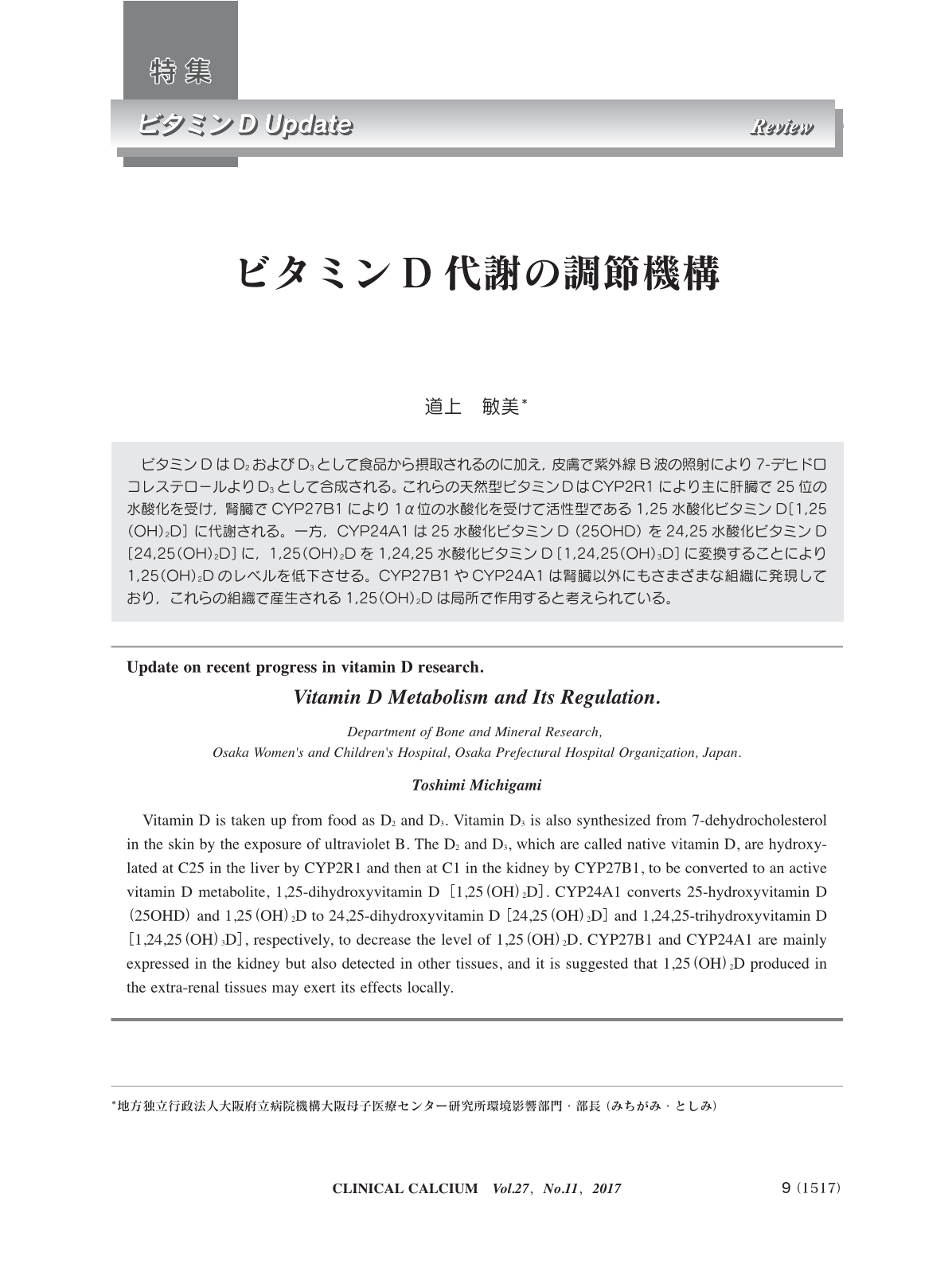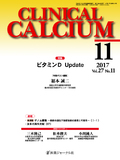Japanese
English
- 有料閲覧
- Abstract 文献概要
- 1ページ目 Look Inside
- 参考文献 Reference
ビタミンDはD2およびD3として食品から摂取されるのに加え,皮膚で紫外線B波の照射により7-デヒドロコレステロールよりD3として合成される。これらの天然型ビタミンDはCYP2R1により主に肝臓で25位の水酸化を受け,腎臓でCYP27B1により1α位の水酸化を受けて活性型である1,25水酸化ビタミンD[1,25(OH)2D]に代謝される。一方,CYP24A1は25水酸化ビタミンD(25OHD)を24,25水酸化ビタミンD[24,25(OH)2D]に,1,25(OH)2Dを1,24,25水酸化ビタミンD[1,24,25(OH)3D]に変換することにより1,25(OH)2Dのレベルを低下させる。CYP27B1やCYP24A1は腎臓以外にもさまざまな組織に発現しており,これらの組織で産生される1,25(OH)2Dは局所で作用すると考えられている。
Vitamin D is taken up from food as D2 and D3. Vitamin D3 is also synthesized from 7-dehydrocholesterol in the skin by the exposure of ultraviolet B. The D2 and D3, which are called native vitamin D, are hydroxylated at C25 in the liver by CYP2R1 and then at C1 in the kidney by CYP27B1, to be converted to an active vitamin D metabolite, 1,25-dihydroxyvitamin D[1,25(OH)2D]. CYP24A1 converts 25-hydroxyvitamin D(25OHD)and 1,25(OH)2D to 24,25-dihydroxyvitamin D[24,25(OH)2D]and 1,24,25-trihydroxyvitamin D[1,24,25(OH)3D], respectively, to decrease the level of 1,25(OH)2D. CYP27B1 and CYP24A1 are mainly expressed in the kidney but also detected in other tissues, and it is suggested that 1,25(OH)2D produced in the extra-renal tissues may exert its effects locally.



